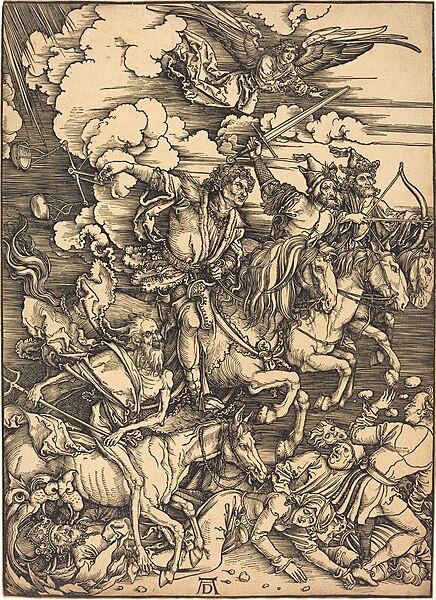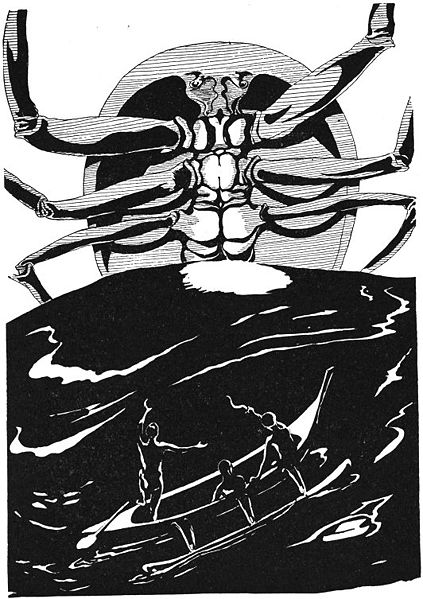Dürer's Rhinoceros is the name commonly given to a woodcut executed by German artist Albrecht Dürer in 1515. Dürer never saw the actual rhinoceros, which was the first living example seen in Europe since Roman times. Instead the image is based on an anonymous written description and brief sketch of an Indian rhinoceros brought to Lisbon in 1515. Later that year, the King of Portugal, Manuel I, sent the animal as a gift for Pope Leo X, but it died in a shipwreck off the coast of Italy. Another live rhinoceros was not seen again in Europe until Abada arrived from India to the court of Sebastian of Portugal in 1577.
The first known print of the rhinoceros is a rather primitive woodcut which illustrates a poem by Giovanni Giacomo Penni published in Rome in July 1515. (Biblioteca Colombina, Seville).
Decoration at the Belém Tower
"Creation of the animals" by Raphael, 1518–1519, a fresco on the second floor of the Palazzi Pontifici in the Vatican. A rhinoceros appears to the right of the tree, with an elephant [possibly Hanno] to the left.
Preparatory study for the rhinoceros print by Albrecht Dürer, 1515 (British Museum: SL,5218.161 ). The inscription bears an incorrect date (1513) for the arrival of the rhinoceros in Lisbon, which actually occurred in 1515.
Woodcut is a relief printing technique in printmaking. An artist carves an image into the surface of a block of wood—typically with gouges—leaving the printing parts level with the surface while removing the non-printing parts. Areas that the artist cuts away carry no ink, while characters or images at surface level carry the ink to produce the print. The block is cut along the wood grain. The surface is covered with ink by rolling over the surface with an ink-covered roller (brayer), leaving ink upon the flat surface but not in the non-printing areas.
The Four Horsemen c. 1496–98 by Albrecht Dürer, depicting the Four Horsemen of the Apocalypse
Block Cutter at Work woodcut by Jost Amman, 1568
The Crab that played with the sea, Woodcut by Rudyard Kipling illustrating one of his Just So Stories (1902). In mixed white-line (below) and normal woodcut (above).
Madonna del Fuoco (Madonna of the Fire, c. 1425), Cathedral of Forlì, in Italy








